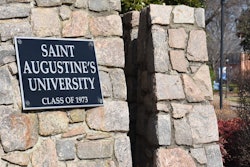RODERICK PAIGE
U.S. Secretary of Education, Dr. Roderick R. Paige sat down with Black Issues senior writer Ronald Roach and Washington correspondent Charles Dervarics to discuss a wide-ranging set of issues related to the Bush administration’s education pledge to “Leave No Child Behind.” Paige was confirmed by the U.S. Senate as the seventh Secretary of the Department of Education on Jan. 20, 2001, following the inauguration of President Bush.
Secretary Paige’s appointment to the Bush Cabinet proved to be the most emblematic of the “compassionate conservatism” brand of politics practiced by President Bush. After a year on the job, Secretary Paige expressed confidence in the administration’s ability to deliver on their pledge, which speaks directly to the issue of class and ethnic disparities in the educational performance of American children.
BI: What were your goals upon becoming secretary of education, and after a year in office, what do you think you have accomplished so far?
RP: My view is that education in our country is a key issue with respect to our economic well-being as a nation relative to our European, Asian and African neighbors. I think it is a security issue of the first order. I just hold education on a high pedestal as a determiner of national well-being. Also, the well-being of the various ethnic and racial groups in America. And it’s even more important now than years ago because … where resources such as land, oil and cotton (were) the foundation of our economy, today ideas, imagination, solutions to problems have that same type of economic and social value. And the foundation of all that is education. I think it’s inescapable.
So my goal, one of my goals as secretary of education, is to assist in changing the culture of education so that it becomes more product-oriented instead of process-oriented, so that it actually works. A lot of good things have happened. A lot of kids are being successful. But I think it’s pretty clear that a large number of people are not. And my specific interest is in being of assistance to those that are not. It is the department’s biggest mission, and that is to provide equal access to a quality education for disadvantaged people.
What have I accomplished in the year that we have been here? The thing that I have accomplished has been the Elementary and Secondary Education Act (ESEA) (which) has been reauthorized. I think it was reauthorized in a way that is quite different. It is going to change the culture of public education. Education is not ever going to be the same as a result of this bill.
So this bill, I think, is kind of a lesson on what other things are going to be like. Now people have some interest in the fact that we started with this bill. The reason that we started with this is because of timing. It was time to reauthorize ESEA. The reauthorization of the Office of Education and Research Improvement (OERI), we’re all gearing up for that now. I understand the process now. I know how it works; I have built a lot of relationships on the Hill and in various communities. I think that a lot has been accomplished. But one of the most important things that has been accomplished, we’ve put together a staff here now that I think is superb. We’ve got great people in this organization.
BI: This leads to my second question. A number of states and school districts around the country, have been adopting approaches to bridge the achievement gap between disadvantaged minority students and White students, or high-achieving students. How is the administration supporting that effort by states and school districts that want something done about this?
RP: First of all, the president is a leader in that. This is a very important point. This is the first president who has taken on that challenge directly. Listen to his language … He says, “Close the achievement gap.” What this means is that those students who have not been doing well, he’s putting very strong emphasis there. Reading is one of the tools that he is using to help close the achievement gap. He’s tripled the funding in reading. He also directed this funding toward processes that are really going to work, not guess work. We’re using science; we’re using information from … the NIH (National Institutes of Health), NCES (National Center for Education Statistics) — who’ve been studying reading for 25 years. We know how to teach reading now. Right now, our fourth graders in the United States, about 30 to 35 percent of them can read at a basic level.
Those that can’t … and guess who they are … they are minority and disadvantaged students — that’s what’s got to be fixed, and the president has taken that on directly. And the ESEA is targeted more sharply towards helping those who are most in need. So he’s the kind of leader, listen to the rest of his language: “Reading is the new civil rights.” Listen to the rest of his language: “The soft bigotry of low expectations.” That’s tough language that nobody seems to be paying much attention to. He’s saying that he intends to do a lot about the educational goals of those who need it most, and we know who those people are. This president is very courageous in that regard.
BI: This White House also has pushed the idea of college promotion, or college as a goal for the Hispanic community. Are we going to see some of this for African Americans and other disadvantaged groups?
RP: Oh, yes. Absolutely. In fact, he’s meeting or empaneling a blue ribbon committee of people to help with this goal. And this committee is going to help identify ways that we can get this goal accomplished. So, I don’t think he has a breakdown in terms of any particular ethnic group. I think it breaks down in terms of where the need is greatest, and the need is greatest in disadvantaged students, African American, Hispanics, and that whole group.
So, listen to his other language, too: “No child left behind.” This doesn’t mean after you take off the good ones, the rest of them can be left behind. It means any child, any student, any disadvantaged person who is being left behind because of the system, we want to fix the system so it works for everybody. And so, college access to African Americans and to Hispanics and to recent immigrants is a great concern of his, as it is of mine.
BI: How does higher education fit into it, leaving no child behind?
RP: Well, I think it fits very well. There are a lot of different ways it would fit. First of all, the most powerful lever for change has to do with the quality of the teacher. The president has requested $2.85 billion in his budget for his enhancing teacher quality project. This involves, in some parts, forming partnerships with postsecondary institutions, especially in the fields of math and science and strengthening the curriculum in math and science and encouraging young people to go into math and science; helping to build partnerships between secondary and postsecondary institutions to promote math and science — the troops to teach a program.
It also offers opportunities for universities and colleges to be involved and to provide certification opportunities for people who are coming into second career options, like troops or even retirements from other fields. For example, California, now, is wisely making use of a lot of the dot-com people who got laid off because those shops closed down. You have a lot of good math and science people there that they’re bringing into the classrooms through universities. Research? Now that we know how young kids learn to read, we still are not clear about math and science. So there are a lot of research opportunities for math and science, and we are dependent on our universities to help with that.
BI: Most of the first year was focused on the Elementary and Secondary Education Act, but you have higher education reauthorization coming up.
RP: That’s right. It was focused on ESEA because of the timing. That’s when the reauthorization of ESEA was scheduled. Remember, ESEA, it would not have been like this if the previous Congress had done it. But remember, it got locked up and didn’t get done, so when this administration came in, this was the first thing staring us in the face. So that was taken on and now it has been accomplished. But each in its own time. The emphasis is on the total picture. What was up for work immediately was the ESEA.
BI: Can you give us any preview of what the department is thinking regarding some of the higher education programs, Pell Grants or TRIO?
RP: The department, because of the president’s emphasis on postsecondary education opportunities, is involved in the expansion of Pell Grant opportunities. Not only are more people having access to Pell Grant opportunities, but the Pell Grant maximum award is being increased from an average of $3,600 to $4,000. Now, because of the economy, I assume it was because of the economy going like it went, the increase in postsecondary institutions has shot up. We have many more kids in school now than the funding estimate. So a shortfall in funding for the Pell Grant situation occurred. So this administration is making that up and also requesting an amount of money in the ’03 budget to maintain the $4,000 maximum Pell Grant award. This is supported by the Congress through the president’s leadership. But the whole idea is to provide more dollars for more students to go to college.
BI: You mentioned earlier about the confirmation process. Some people in the higher education community had some concerns with the lack of a higher education team, or a postsecondary assistant secretary. How far along is that process?
RP: …The bureaucratic process through which these kinds of personnel decisions are made is, in my view, in need of serious revision. I think members of the Congress and the Senate would agree with that. I think, also, that we’ve allowed this process to become pretty highly politicized in many cases as well. I think all of us bear some responsibility here. But, we would certainly hope that the leadership of the Congress would find a way, along with us, find a way to speed up the confirmation, first the identification and confirmation of key leaders in all of the federal agencies.
BI: Many low-income students are attending community colleges. How do they fit into your education reform plans?
RP: The community college program is a very important program to the overall program mix, and I think that the president is planning a major address on community colleges sometime in the very near future, a couple of months or so out in front of us. I think so. I’m not sure of the exact date, but I know that even now there’s some planning discussion about the president’s ideas on leadership in the community colleges. So rather than pre-empt a lot of the things that he’s going to say, I can announce to you that the president is going to be speaking out on the community college’s role in the entire education mix, and it’s going to be a very important role.
BI: You have had a distinguished career as a coach, administrator and professor at historically Black colleges. Has that background been helpful with this administration in terms of your influence and in terms of policies that you have been directing toward helping historically Black colleges and other minority-serving institutions?
RP: Well, I think so. It adds a voice that might not have been quite as available in the past. You’re right. My experience has been, not only as an authority person, a member of the faculty and staff of HBCUs, but also my education is due to the existence of HBCUs. Jackson State, had Jackson State not been available in Mississippi when I grew up, I might not have been able to get a college education. So I am very sensitive about this position. However, the HBCUs now are facing a very important challenge, and that challenge has to do with finding the appropriate mission mix.
You know that the HBCUs came into existence to serve a particular mission, and that mission now still exists in large measure, but many of the people who traditionally would have been served by HBCUs are now going to non-HBCU institutions. And these non-HBCU institutions are very competitive for the students who are traditionally going to these institutions. I think that President Sawyer, who was president of Texas Southern University at the time that I was a member of the faculty, who I think lead a very important initiative to redefine the mission of Texas Southern University … a mission which had to do with the urban situation that most of our people are involved in. And highlighting that particular experience, I noticed that many major institutions now are moving towards the betterment of the urban life as a part of their mission.
So my whole point is that the situation in the postsecondary education life now is becoming more and more competitive and institutions are required now to support their operations with strong and clear missions and strong and clear standards. And the HBCUs, I think, have a very important role to play, and sharpening that to make it more clear to the rest of the world so that they, too, can understand the importance of HBCUs in American education.
BI: My last question is two-part. How long do you expect to stay in the job as education secretary? And when your tenure is completed, how do you want to be remembered in terms of your impact as education secretary?
RP: I would just be very glad for this thing to last … I want to be remembered as a part of the force that caused a change in the culture of education in America. I want people to look back and notice that this is the point that there was a perceptible and clear change in the direction in terms of productivity and effectiveness and efficiency in terms of education, which provided a real opportunity to more people who otherwise would not have had it. Remember, we are doing a great job in America educating some of the children, but not enough of them, because many of them are being left behind. And so, we want to be a part of helping that group that’s being left behind catch up, and maybe even go ahead.
What do I plan to do when my tenure here ends? I still intend to be a voice. I intend to be a voice through writing, lecturing, maybe even a professorship somewhere. But when I look back through my career, of all the different things that I’ve done, which I’ve enjoyed, all of them, all of them have been fun, including this. This has been fun. But if I have to rank them and find out which has been the most fun, the most fun for me has been the times when I was just assigned to a classroom and teaching students, just teaching, just interacting directly with students. That’s probably, for me, the ultimate professional educational experience.
BI: Do you expect to remain in the Cabinet until this particular administration runs out?
RP: Well, this particular administration is going to be around eight years. There’s seven more years. I am just going to finish this first term. Go all the way to the end of it. Whether I join a second one or not, will be based on how I feel and what’s next. But this is a long-term commitment. You can’t get what we’re trying to get done on the hit and miss of a short-time basis. So I made the full commitment to work until I get this done.
© Copyright 2005 by DiverseEducation.com















